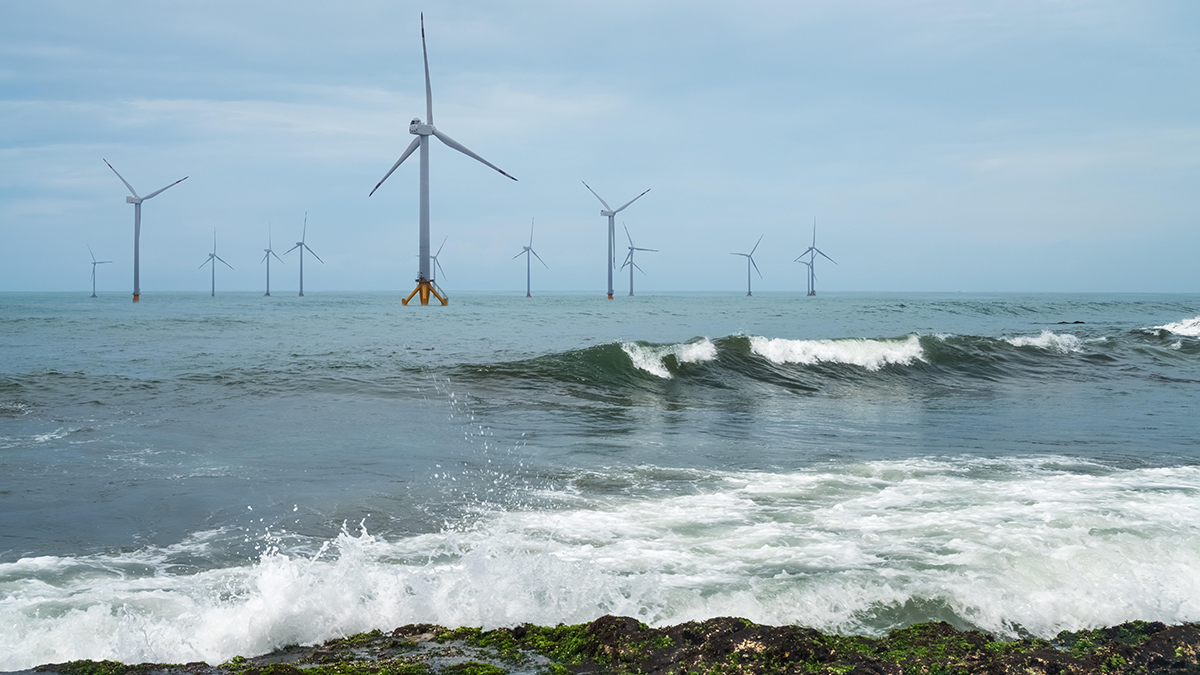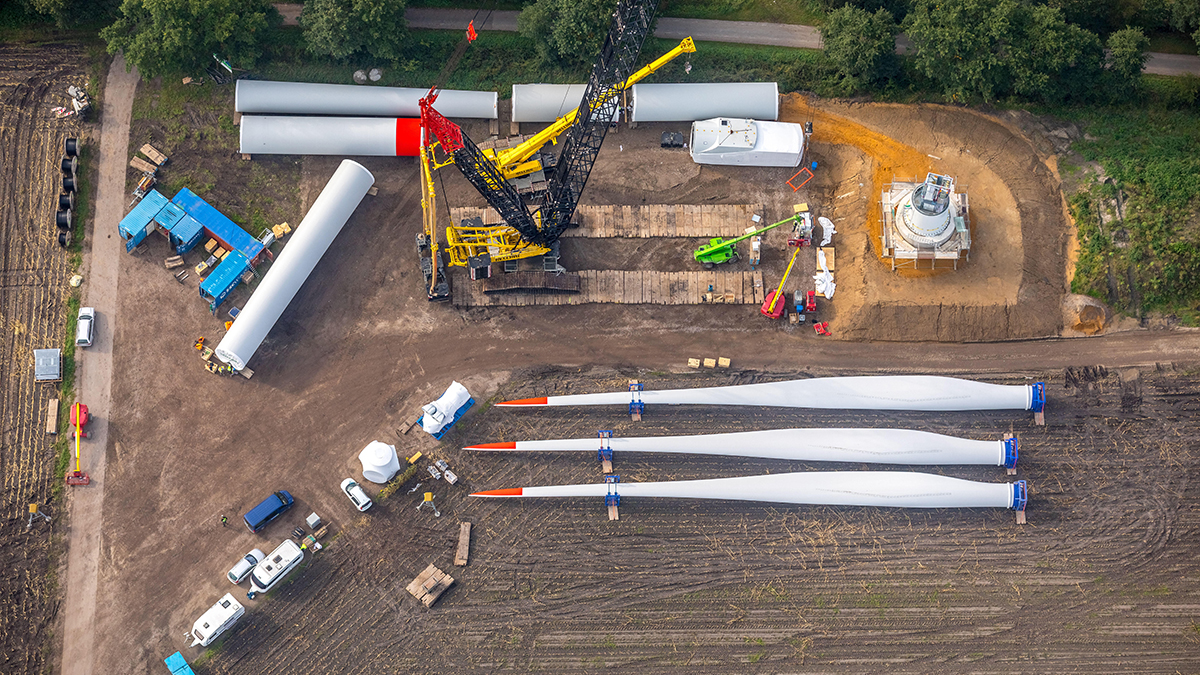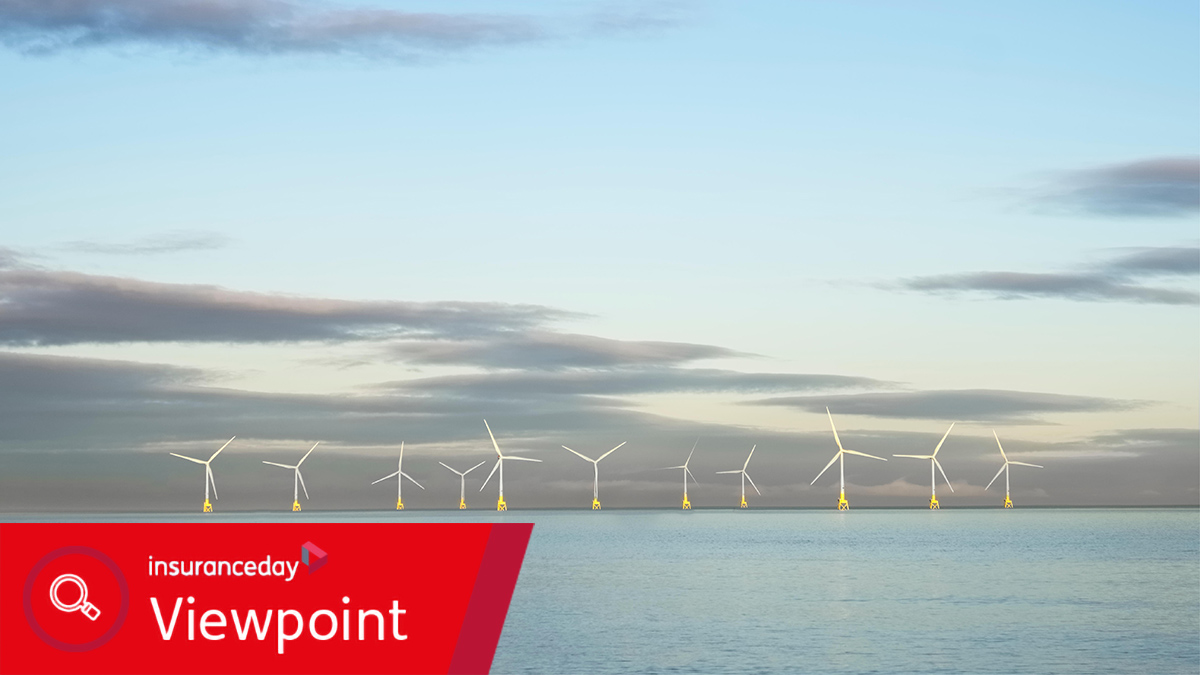Serial defect claims in offshore wind projects will challenge insurers
The London market is responding to the increased risk with updated wordings and clauses
New technologies and the increasing scale of renewable energy projects will help the energy transition, but will also present a significant risk for the industry
Serial defects in renewable energy projects, particularly offshore wind farms, remain a significant risk for insurers, as the rising demand for clean energy drives larger turbine capacity and rapid technological advancements.
Offshore wind farms comprise a large number of replicated assets (for example turbines and cables), designed, manufactured and installed in the same way across a project site. A design or workmanship issue identified on one asset may mean there is an issue with others. Historic problems with cable protection systems (CPS) are a prime example of a design issue causing serial losses across multiple wind farms.
Floating farms are the next frontier for offshore wind, potentially enabling increased clean energy production and transition away from fossil fuels. However, at present they involve nascent design concepts and limited operational experience. Combined with severe weather conditions in deepwater locations and difficult assembly and repair logistics, the potential for design issues to give rise to claims in these projects is significant.
As with all claims, understanding the root cause of a serial loss is crucial to determining policy response. For example, a turbine blade malfunction may be caused by faulty workmanship in the tightening of bolts connecting the blades to the nacelle, but it could also be due to defective design or material choice.
Some key coverage issues arising in the context of serial defect losses under construction all risks (CAR) and operational all risks (OAR) policies are set out below. As always, the background facts, specific wording and the law/jurisdiction that applies to the policy will determine the relevance of these issues and how they should be determined in any given claim.
To access the main coverage under a typical CAR or OAR policy an insured must show there has been damage to the insured property within the policy period.
Adverse physical change
Under English law, there must be an adverse physical change in the condition of the property, impairing its value or usefulness, to constitute “damage”. Property that is merely in a defective condition is not “damaged”. However, the way damage is assessed can vary between jurisdictions. Recent US decisions (see South Capitol Bridgebuilders v Lexington (2023) and Archer Western v Ace (2023)), have considered that property created in a defective condition can constitute physical damage.
In serial defect cases, it is important to identify whether each affected asset has in fact been damaged, for the purposes of policy cover, and when the damage occurred, to understand which policy year it potentially falls to.
Exclusions may operate to limit cover for serial defect losses. For example, offshore wind CAR policies typically use the London Engineering Group clauses, which provide differing levels of cover for damage caused by defects in design, workmanship or materials. Of course, such clauses will only be relevant if the design or workmanship has been “defective”. In this regard, it is important to recognise that defective design may not necessarily require negligence.
Aggregation
If multiple assets are damaged by the same design or workmanship issue, one must consider the extent to which the losses can be aggregated. Aggregation determines how many excesses/deductibles an insured must bear, and how many limits of indemnity are available to the insured. Policies often provide that deductibles and coverage limits apply “per occurrence”. The definition of “occurrence” can differ but usually groups together all losses arising out of a single “event”.
Other jurisdictions may differ, but under English law whether something is an “event” is generally considered applying the unities test: something that happens at a particular time, at a particular place and in a particular way. When dealing with serial defect losses, the cause of loss can often have been a defective design decision. Can a defective design be an “event”?
In Sky UK Limited and Mace Limited v Riverstone Managing Agency and others the court held that a decision not to apply temporary weatherproofing over “cassettes” installed on a timber roof (which led to water ingress and damage to the individual cassettes) was a single event. The court reasoned there is no legal principle to the effect that a decision can never be an “event” (similar considerations have arisen in a number of Covid-19 related insurance cases). The case is under appeal, but whether losses stemming from a defective design can be aggregated will be highly dependent on the facts and wording of the particular case.
Further, whether damage caused by repeated instances of defective workmanship, rather than a single design decision, can be aggregated is again fact-dependent. There is however English case law suggesting individual acts of defective workmanship would not amount to a single “event”.
Serial loss clauses
Steps to mitigate exposure to serial defect losses include incorporating serial loss clauses (SLCs) in policies, which typically provide a sliding scale of indemnity based on the number of losses sustained. Previously, SLCs were often quite limited in scope. For instance, they might only apply to property supplied under the turbine supply agreement and be confined to the property damage section of a policy, but not to the business interruption (BI) or delay in start-up (DSU) sections.
More recent LMA wordings (LMA5587 and LMA5588) apply to all property and BI/DSU losses as well as property damage. Notably, the LMA SLCs also apply a deductible per each “loss amount”, defined as loss of or damage to each individual item of insured property.
One issue to consider with SLCs is the order of losses when applying the sliding scale of indemnity. If the order is determined by reference to the dates on which the loss/damage occurred, it may not always be straightforward to determine when a particular item of property suffered damage.
Policies will often specify the insured must pursue their contractual rights under any warranties or guarantees in respect of defective assets before looking to the policy for cover.
Further, if a serial defect claim is indemnifiable under a policy, insurers can consider the extent to which their outlay might be recoverable from the party responsible for the relevant defect. Their ability to do so will depend on the terms of the policy (CAR policies are usually composite policies insuring all contractors/subcontractors with wide waivers of subrogation in favour of insured parties), and the terms of the relevant contract.
Serial defect issues are likely to continue occupying insurers both at the underwriting and claims handling stages. The London market is responding with updated wordings and clauses. New technologies and the increasing scale of renewable energy projects will undoubtedly help the energy transition with the wider benefits that this will bring, but will also pose challenges for risk managers, brokers and insurers for many years to come.


